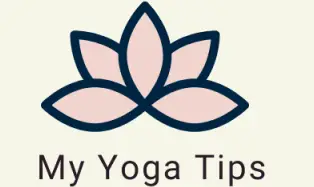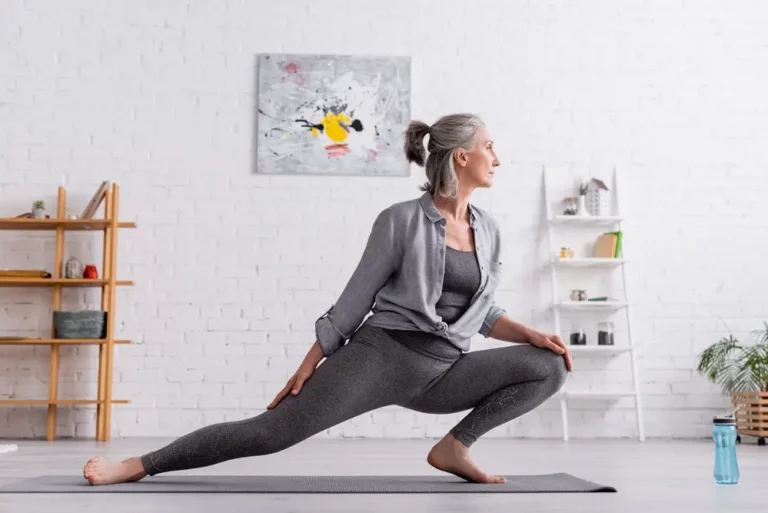How To Do Yoga Without A Mat: The Complete Guide

Yoga is a great activity to release stress actively and positively. However, sometimes you might have misplaced your yoga mat, or maybe you’re a beginner who doesn’t have a yoga mat. Whatever the case may be, are you wondering if you can do yoga without a mat, and how would you go about it?
You can practice yoga without using a mat as long as you are willing to make some adjustments to your practice. You can focus on standing poses, find the best possible surface, protect sensitive body parts, don’t do any hurtful poses, and if you are prone to sweating, practice on non-slip surfaces.
Practicing yoga without a mat can be just as fun as practicing without one. Fortunately for your muscles, there are many things you can do to make it easier and more enjoyable. Continue reading with us as we discuss an entire guide on how you can do yoga without a mat!
How Do You Do Yoga Without A Mat?
If you’re interested in practicing yoga without a yoga mat, you can follow several easy guidelines to make it possible.
However, it is up to you which one or the ones you want to follow. At the end of the day, it’s mainly about which one of right for you and your body.
Shift Your Focus To Standing Poses
If you decide on doing yoga without a yoga mat, you may be a bit uncomfortable. Most of your discomfort will come from touching and coming into contact with the hard ground. Luckily, there is one that you can prevent this problem.
You can stick asanas on your feet. This will make poses such as the warrior pose and triangle pose much more convenient for you. You may feel like your yoga session is incomplete by doing this.
However, doing just a few poses is still much better than doing no poses at all. You can also think of other plans when it comes to doing some of the other poses, such as making use of a towel or maybe doing your yoga session on top of the grass in your garden or backyard.
If you cannot do all your usual poses, there is one way you can benefit from these adjustments.
You can simply hold the poses that you are doing for longer. You may be doing fewer asanas, but you can still go deeper into them and focus much more intensely.
Look For The Best Surfaces And Walls
When you’re not using a yoga mat, what really matters most is the type of surface you are doing your exercises on.
You have to try your best to find a surface that can be as comfortable for you as possible without a mat.
As an example, surfaces made of stone can cause you a lot of discomforts as they are very slippery and are usually too hot or too cold. You can fix this by placing a blanket on top of these surfaces, but the blanket can also slide.
It will often be much more comfortable for you to practice your yoga on surfaces such as wood or grass. The only thing you should always keep in mind is that if you do use these surfaces, you might become dirty while doing yoga.
It would also be good to make sure that a wall is present when you are doing your yoga session.
For example, if you’re going to practice the puppy pose with your hands on the wall, you can make use of the wall to push yourself in this pose, and then it doesn’t matter if you do not have a mat.
Always Protect Your Sensitive Body Parts
The most challenging part of doing yoga without a yoga mat may involve uncomfortable contact with the ground.
You can, however, wear long pants with a long-sleeved shirt to successfully protect your body. Additionally, suppose you’re doing Shavasana towards the end of your yoga session.
In this case, it may be more comfortable to sit instead of laying down if you do not have a yoga mat.
You won’t be able to relax to the fullest extent if you have to lie down on an uncomfortable floor, and it is crucial that you relax at the end of your practice.
If It Hurts Or Is Uncomfortable, Do Not Do The Pose
This is a very important rule in general. For example, if your knees hurt when you place them on the floor, do not put your knees down. Instead of doing a low lunge, rather do a high lunge.
In yoga, there is always a variation to a pose. Try your best to figure out the goal of the pose and the muscles it involves, and just do them in a slightly different position.
Practice Yoga In A Chair
If you are unable to get up and down from the floor, you can try to practice yoga in a chair. However, you should always make sure you have placed the chair on something that will not slide. Yoga on chairs has gained a lot of popularity amongst seniors.
However, it is always a choice regardless of your age, especially if you’re still recovering from an injury or illness.
Your Routine Needs To Be Flexible
A lot of people who practice yoga regularly tend to follow the same routine each time they do their exercises.
While this is nota bad idea, it can also be good if you are able to adjust and adapt to the changes in your environment and circumstances. In fact, changing your yoga routine can actually be the key to sticking to your practice since these changes are unavoidable.
If you are only able to do asanas on top of hard ground and find it too uncomfortable without them, try to be okay with itonly to do the poses that won’t cause you any discomfort for that one specific day
Conclusion
Now that you know the complete guide to doing yoga without a mat, it will save you a lot of trouble, and you might even find the perfect way to make it as comfortable as it would be if you had a yoga mat.
Remember always to do what is comfortable for you and your body, and never overstimulate your muscles.







